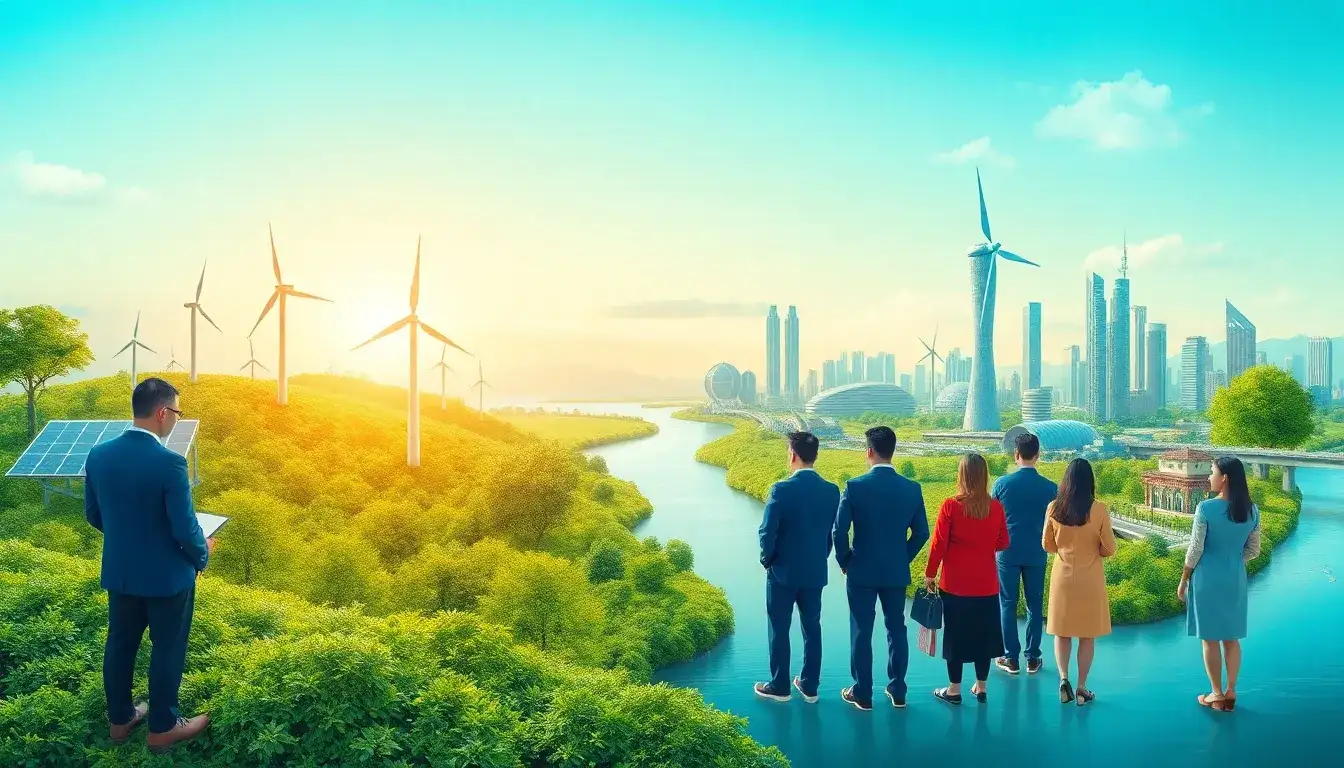
This year, the themes of green, low-carbon, and energy transition continue to dominate discussions at the Boao Forum for Asia. The annual meeting has organized several sub-forums to explore topics such as global climate governance, the construction of new energy systems, and the co-construction and sharing of green electricity, all aimed at contributing “Boao wisdom” for sustainable development in Asia and the world.
Experts at the forum emphasized that issues like climate change remain pressing, and that green development is an essential path for Asian countries to achieve sustainable development. It is crucial for all parties to collaborate and prioritize green development.
Irreversible Progress in Global Energy Transition
“The progress in global energy transition is irreversible, leading up to achieving global carbon neutrality,” stated Liu Zhenmin, China’s Special Envoy for Climate Change. He highlighted that the energy transition is driven by the political will of member countries, market forces, and technology, and that no country can halt this progress.
Currently, developing clean energy and promoting a green low-carbon transformation of the economy and society has become a consensus within the international community in response to global climate change and to accelerate the achievement of sustainable development goals.
The “2025 Annual Report on Sustainable Development in Asia and the World—Addressing Climate Change: Advancing Green Development in Asia,” released on March 25 during the annual meeting, noted that successful transition to a low-carbon economy that benefits nature requires better integration of carbon markets, nature-based solutions, and green technologies. Countries also need to fully leverage the win-win opportunities of sustainable transformation, create green jobs, reduce health costs related to air and water pollution, and enhance the efficiency of energy and natural resource use.
Zhu Min, Vice Chairman of the China Center for International Economic Exchanges and former Vice President of the International Monetary Fund, pointed out that carbon neutrality has become a new growth model or engine for the world. For instance, solar panels produced in China have a power generation cost that is only 50% of that of coal. Solar power plants established by Chinese companies in Saudi Arabia have even achieved a cost of just 1 cent per kilowatt-hour. “From this perspective, carbon neutrality technology represents the hope for future human growth,” Zhu said.
Patricio Contesse, Vice Chairman of the Board of Chilean Mining and Chemical, shared the view that carbon neutrality holds significant opportunities. He noted that over the past five years, through the use of new energy technologies, the company’s output has increased fourfold, enabling the production of more lithium resources with higher efficiency while utilizing fewer resources.
Building an Asian Energy Internet is Key
“Asia’s economic growth is strong, and energy demand is high, with an average annual electricity consumption growth rate of 5% over the past decade, significantly exceeding the global average of 2.4%,” remarked Xin Baoan, Chairman of the Global Energy Interconnection Development and Cooperation Organization and the China Electricity Council. He identified three major challenges facing energy development in Asia: electricity supply, low-carbon development, and inclusive development. Fully developing and utilizing clean energy and constructing an Asian Energy Internet are key to achieving energy transition and sustainable development in the region.
Qian Chaoyang, General Manager and Director of China Southern Power Grid, also stated that there is immense potential for complementary green energy combinations among Asian countries, but a collaborative effort is needed to build a new energy system. He urged countries in Asia to strengthen the alignment of international energy and electricity strategic mechanisms, enhance the construction of interconnected power grids, and accelerate the establishment of new power systems and new energy systems through collective efforts.
Song Hailiang, Chairman of China Energy Engineering Group, emphasized that building a new energy system requires “efforts on five fronts”: on the supply side, the new energy system must be diverse and green; on the consumption side, green alternatives and transitions are essential; on the innovation front, collaboration between industry, academia, and research must drive technological upgrades; regarding spatial layout, regional and sectoral planning should aim for supply-demand balance; and at the policy level, regulatory bodies must provide positive incentives and assessment mechanisms for green transitions and new energy, along with constraints.
The establishment of a new energy system relies heavily on the support of the industrial chain. Currently, China has developed the largest and most complete new energy industrial chain in the world. Zhang Chuanwei, Founder and Chairman of Mingyang Smart Energy Group, stated that China’s industrial and manufacturing chains are fostering industrial collaboration in Asia and Europe, providing robust support for the green electricity energy transition in the region.
Offering Valuable Insights for Green Development
During the forum, several experts discussed how, in recent years, China has consistently promoted the development of renewable energy and clean energy technologies, positively impacting global green development.
From green energy-powered coffee machines to pedal-operated carbon reduction experience platforms, and from flower-shaped wind turbines to photovoltaic floors outside the news center, zero-carbon scenes and carbon-reducing technologies were evident throughout the venue on Dongyu Island in Boao. The concept of green development is being integrated into tangible experiences.
Notably, Boao has been actively working on establishing a zero-carbon demonstration zone on Dongyu Island. By 2024, this zone aims to achieve a 96.2% reduction in carbon emissions, becoming the first area in China to reach near-zero carbon emissions, and serving as a benchmark case for near-zero carbon development in tropical regions globally.
According to Bai Leifu, Chief Economist of the Asian Infrastructure Investment Bank, China’s achievements in promoting green transition are remarkable, and its experiences in green development provide valuable references for other developing countries.
Helena McLeod, Deputy Secretary-General of the Global Green Growth Institute, noted that with the support of policies, capital investment, and an innovative ecosystem, China is leading in sectors such as new energy vehicles, energy storage, and renewable energy, helping Asia become a global pioneer in green technology research and development.







